
Rhonda Wheatley
Rhonda has a background in writing and has always had an affection toward the way letters look on the page. So naturally as she started exploring and teaching herself how to painting, these letters began making there into her pieces. Her recent work uses more of a collage effect by blending cut-up letters and words into the background and then creating designs on top of the collage. You can currently view her work at the Flatfile Gallery (through Feb. 22nd), along side from Orange Alert interviewee Lacey Pipher.
Recently, Rhonda was kind enough to answer a few of my questions.


OA: Your "Glimpse" series of paintings focuses on a specific moment or as you have put it "a long, forever moment where there is no past, no future". Do you set out with a specific image or color scheme in mind for each piece or do you tend to explore during the the process?
RW: Most of the time I set out to create final piece with a particular word-image laid out in a particular angle. And I usually have a color scheme in mind as well. But the finished pieces never end up looking the same as they do in my mind or in my little hand-written “planning” notes. The work always takes on a different direction through the process and I am learning to get more comfortable with that, because that’s where new ideas and directions come about—that’s where I learn the most and find the surprises.
OA: You are currently involved in a show at Flatfile Galleries with Lacey Pipher. As a Chicago artist, what are your thoughts on the art scene in Chicago?
RW: Chicago’s art scene has a lot happening. And really, I see it as multiple art scenes, depending on what you’re interested in. I like the fact that you can get involved with the arts at a very local, close-up level with artists at the festivals or open studio events around the city or see exhibitions of international interest at the museums and certain galleries. I’m very excited about Art Chicago’s new owners and the level of participation they’re bringing back to the fair. I’m excited about spaces like the Hyde Park Art Center, right in my neighborhood. However, I think we could do a lot more in this city with better funding for art-related not-for-profits (many which have closed their doors, or are struggling but have a lot to offer) and individual artists.
OA: What's next for Rhonda Wheatley?
RW: One, I’ll just be exploring for the sake of exploring and fun while getting out to see some art around Chicago and in other cities—which I LOVE doing. Two, I have a residency fellowship this spring at the Ragdale Foundation, and as I’ve never had an artist residency before, I am looking forward to the ability to focus solely on art making. I’m also eager to see if and how my work will change with that level of focus.

Bonus Questions:
OA: Coffee? If yes, what is your favorite type of coffee and where is your favorite coffee spot?
RW: I have to say, while I occasionally go for a cappuccino, I am a devout tea drinker. About 5 cups of green tea a day at home, and chai tea wherever I can get it while out (mostly Starbucks!).
I have always felt that there is connection between the writer and the artist, and it is more then just in creative output. There is a certain amount of necessity involved, the writer at times needs the illustrator and the artist needs the reviewer, and in a way art informs writing and writing can at times inform art. To take it further, the most powerful tool at creating an image is the mind, and there is no better way to create an image in the mind then to read a well-written story. There are many ways to tie together Art and Literature, but one artist who is literally combining the two is Rhonda Wheatley.
Rhonda has a background in writing and has always had an affection toward the way letters look on the page. So naturally as she started exploring and teaching herself how to painting, these letters began making there into her pieces. Her recent work uses more of a collage effect by blending cut-up letters and words into the background and then creating designs on top of the collage. You can currently view her work at the Flatfile Gallery (through Feb. 22nd), along side from Orange Alert interviewee Lacey Pipher.
Recently, Rhonda was kind enough to answer a few of my questions.

Orange Alert (OA): How would you describe your work?
Rhonda Wheatley (RW): In my paintings I am always trying to say something about the living, breathing, always moving nature of words—thoughts taking shape and becoming words (and I try to imagine what that might look like) or a thinker trying to find words to give meaning to an experience that’s difficult to explain. Whether a particular series is about consciousness shifting or words from my dreams, the top layer shapes in my work are always words or derived from actual words and letter forms—they are fluid, moving, changing, and fleeting.
OA: I really enjoy the way you incorporate writing and letters into your pieces. How did you first start working with letters in this way? Do you feel there is a deeper connection between the writer and the artist?
RW: There certainly is a connection between the writer and artist. Professionally, I happen to have a background in writing. Although I’ve been making art since I was a small child, I formally studied literature and earned my MA in Writing. When I first began developing my work after deciding to become a professional artist (as an adult, after working a number of years in communications), I naturally gravitated toward words and letterforms. Throughout the explorations that resulted in the art I’m doing today, I realized that these inclinations toward treating word and letterform as image had always been there. As a kid I “drew” graffiti-like words and played with words visually in the margins of school notebooks. In the high school yearbook and on school event programs I was commissioned to draw these decorative headings and title pages. I realized that my later academic and professional interest in writing and editing stemmed from an overall love of words. I even aced word problems in high school pre-calculus (while bombing for the most part on purely numeric problems). I’m simply a word oriented person!
OA: It seems like a lot of your time is spent preparing your canvas. Can you briefly take us through your process from prep to finished piece? Typically, how long does each piece take?
RW: It’s difficult for me to separate creating an individual piece from creating a series. First, I may spend weeks or months focused just on the drawings (in which I make abstractions of words) that end up on the top layers of each canvas. Next, for collage works, I spend days or weeks poring through books and magazines for images, then selecting the ones really I want to use. When developing the individual canvases, I tend to work on several at a time, alternating between layers of paint or collage and sometimes some hand-“carved” ornamental textures before adding the last and final layer—the word layer. I work in 8-12 hour stretches—I like the long haul. And a group of several pieces may take a week or more of 8-12 hour days. If I am painting the top layers (which I project onto the canvas) it takes far less time than when I create paper cutouts for the top layers, since I may spend a few extra days just drawing repeated shapes of the same words, then cutting them out, which I then take the time to arrange, layer, play with, and then finally apply to the canvas.
Rhonda Wheatley (RW): In my paintings I am always trying to say something about the living, breathing, always moving nature of words—thoughts taking shape and becoming words (and I try to imagine what that might look like) or a thinker trying to find words to give meaning to an experience that’s difficult to explain. Whether a particular series is about consciousness shifting or words from my dreams, the top layer shapes in my work are always words or derived from actual words and letter forms—they are fluid, moving, changing, and fleeting.
OA: I really enjoy the way you incorporate writing and letters into your pieces. How did you first start working with letters in this way? Do you feel there is a deeper connection between the writer and the artist?
RW: There certainly is a connection between the writer and artist. Professionally, I happen to have a background in writing. Although I’ve been making art since I was a small child, I formally studied literature and earned my MA in Writing. When I first began developing my work after deciding to become a professional artist (as an adult, after working a number of years in communications), I naturally gravitated toward words and letterforms. Throughout the explorations that resulted in the art I’m doing today, I realized that these inclinations toward treating word and letterform as image had always been there. As a kid I “drew” graffiti-like words and played with words visually in the margins of school notebooks. In the high school yearbook and on school event programs I was commissioned to draw these decorative headings and title pages. I realized that my later academic and professional interest in writing and editing stemmed from an overall love of words. I even aced word problems in high school pre-calculus (while bombing for the most part on purely numeric problems). I’m simply a word oriented person!
OA: It seems like a lot of your time is spent preparing your canvas. Can you briefly take us through your process from prep to finished piece? Typically, how long does each piece take?
RW: It’s difficult for me to separate creating an individual piece from creating a series. First, I may spend weeks or months focused just on the drawings (in which I make abstractions of words) that end up on the top layers of each canvas. Next, for collage works, I spend days or weeks poring through books and magazines for images, then selecting the ones really I want to use. When developing the individual canvases, I tend to work on several at a time, alternating between layers of paint or collage and sometimes some hand-“carved” ornamental textures before adding the last and final layer—the word layer. I work in 8-12 hour stretches—I like the long haul. And a group of several pieces may take a week or more of 8-12 hour days. If I am painting the top layers (which I project onto the canvas) it takes far less time than when I create paper cutouts for the top layers, since I may spend a few extra days just drawing repeated shapes of the same words, then cutting them out, which I then take the time to arrange, layer, play with, and then finally apply to the canvas.

OA: Your "Glimpse" series of paintings focuses on a specific moment or as you have put it "a long, forever moment where there is no past, no future". Do you set out with a specific image or color scheme in mind for each piece or do you tend to explore during the the process?
RW: Most of the time I set out to create final piece with a particular word-image laid out in a particular angle. And I usually have a color scheme in mind as well. But the finished pieces never end up looking the same as they do in my mind or in my little hand-written “planning” notes. The work always takes on a different direction through the process and I am learning to get more comfortable with that, because that’s where new ideas and directions come about—that’s where I learn the most and find the surprises.
OA: You are currently involved in a show at Flatfile Galleries with Lacey Pipher. As a Chicago artist, what are your thoughts on the art scene in Chicago?
RW: Chicago’s art scene has a lot happening. And really, I see it as multiple art scenes, depending on what you’re interested in. I like the fact that you can get involved with the arts at a very local, close-up level with artists at the festivals or open studio events around the city or see exhibitions of international interest at the museums and certain galleries. I’m very excited about Art Chicago’s new owners and the level of participation they’re bringing back to the fair. I’m excited about spaces like the Hyde Park Art Center, right in my neighborhood. However, I think we could do a lot more in this city with better funding for art-related not-for-profits (many which have closed their doors, or are struggling but have a lot to offer) and individual artists.
OA: What's next for Rhonda Wheatley?
RW: One, I’ll just be exploring for the sake of exploring and fun while getting out to see some art around Chicago and in other cities—which I LOVE doing. Two, I have a residency fellowship this spring at the Ragdale Foundation, and as I’ve never had an artist residency before, I am looking forward to the ability to focus solely on art making. I’m also eager to see if and how my work will change with that level of focus.

Bonus Questions:
OA: Coffee? If yes, what is your favorite type of coffee and where is your favorite coffee spot?
RW: I have to say, while I occasionally go for a cappuccino, I am a devout tea drinker. About 5 cups of green tea a day at home, and chai tea wherever I can get it while out (mostly Starbucks!).
OA: Do you listen to music while you paint? What type of music do you enjoy while painting and in general?
RW: I often keep the TV on as background noise while painting, and sometimes I like pure quiet (which is difficult with my loud upstairs neighbors). But when I want to get into the work at a more meditative level, where I really forget where I am and who I am while working, especially on the drawings, I’ll listen to a wide range of different music: the Blade Runner Soundtrack by Vangelis, Mahalia Jackson, Kraftwerk, Erik Satie, some up-tempo George Gershwin, or some Jazzanova remixes.
For more information on Rhonda Wheatley please visit her website.
+by+Nick+Volkert).jpg)
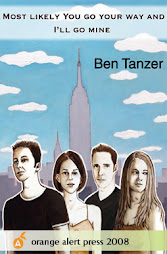

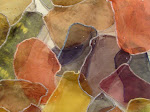









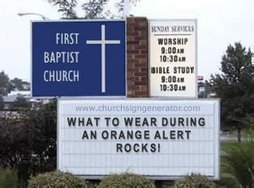


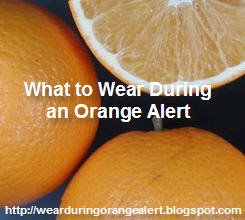


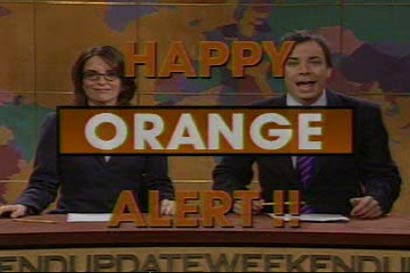


No comments:
Post a Comment